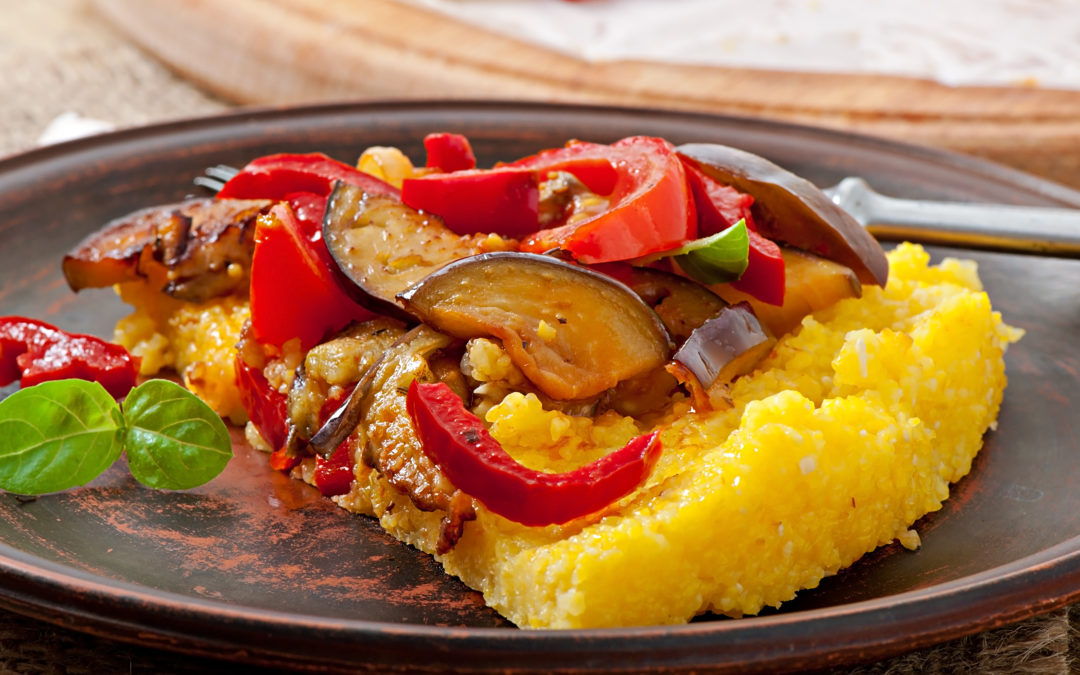You may know it as cornmeal, but if you want to try the actual Italian dish you should call it Polenta
Feeling cold and hungry? Polenta is here just for you! It is ideal to have a satisfying lunch at a mountain hut or to share a homemade meal with your loved ones or even to give an extra kick to your BBQ. Consider spilling a seasoning of your choosing on polenta, you have got plenty of choices: ragout, sausage, mushrooms, cheese, cuttlefish, salami, salt cod, vegetables, and even herbs. The Italian cuisine knows many ways of cooking polenta and all methods belong to some regional traditions – Veneto, Lombardy, Piedmont, Trentino-South Tyrol, Friuli Venezia Giulia, Aosta Valley, Emilia-Romagna, Liguria…as you can presume, polenta runs through all Northern Italy.
Visualizza questo post su Instagram
From the Roman empire until modern days: the rough ride of Polenta
The origin of polenta is one of the most ancient of human history and it may represent the first cooked meal ever. The very first evidence we have ever heard comes from the Assyrian, Sumerian, Babylonian and Egyptian times when people used to make their own polenta with millet and rye. And then came the Greeks with their particular polenta, made by barley flour and cooked in salty boiling water. Eventually, the recipe arrived to the Romans, but they used spelt flour instead. Their recipe involved salty water to match with meat, fruits, hummus, fish, or cheese. Romans used to call it “puls” and later on they gained the nickname of “pultiferi” – which means “polenta eater”. Still today, a sort of variety of the original Roman polenta is spread in the Southern regions of Italy. Since then, polenta became appreciated throughout the entire Roman empire. With the discovery of America by Cristoforo Colombo, things changed once again. A new cereal was found in this land and brought to Italy: the corn. At that time, people started to make a polenta similar to the one we know and love nowadays: this new yellow-goldish polenta was a treasure especially for the poorest ones, because of the corn’s cheapness and the high nourishing value. Now, polenta is commonly eaten in the northern areas of Italy, since its soil is particularly suitable for corn cultivation.
Visualizza questo post su Instagram
Polenta enjoys widespread popularity, leading to many Italian varieties
Although polenta is very versatile, it’s still possible to list some of the most popular ones. But there is one thing that every type of polenta has in common – it should be cooked with a wooden ladle. Let’s have a look at the major polenta varieties. The most common one is the Yellow Polenta, made with corn flour and cooked through different methods, therefore several yellow polenta recipes are spread all over Italy. Traditionally, this kind of polenta can be paired with cheese, venison sauces and it can be fried as well, so that you will obtain a sort of delicious croutons. The White Polenta is much more delicate thanks to the white corn and it’s usually served with fish because of its soft flavor. Cuttlefish, clams, and salt cod represent the perfect match. It is common in Veneto region. For lovers of strong and intense flavor, the Black Polenta is recommended. Its dark deep color is due to the buckwheat flour. It’s probably the most unknown polenta. For this reason, it is the perfect choice to try something out of the ordinary. And last but not least, Polenta Taragna. Lombardy leads Italy in the production of the latter. It is made from buckwheat along with corn. The result is a creamy and bitter polenta and if you add butter or cheese, the match will be perfect.
Visualizza questo post su Instagram
A traditional recipe: Polenta with mushrooms and sausage
Polenta with mushrooms and sausage is considered as something belonging to the ancient tradition of Italy and, still, Italian families bring it to the table on the coldest days of the year.
- 400 g of corn flour
- 2 l of water
- 2 sausages
- 400 g of mushrooms (champignon is the best choice, but you can also use a mix of mushrooms)
- 1 onion
- Olive oil
- Salt
- Parsley
To prepare polenta, use a pan with a double bottom. Pour water and salt in it and let it boil. Pour the corn flour, but not all at the same time, and mix it very well. Once you poured all the flour, lower the heat until it thickens. While polenta is cooking, let’s focus on the mushrooms and sausage sauce. Cut the mushrooms and pour them in a pan with onion, olive oil, crumbled sausage, and parsley and let it cook for about 30 minutes. As soon as everything is ready, put the polenta on a dish or, even better, on a wooden cutting board and season with the mushrooms and sausage sauce. Making this type of polenta might seem laborious at first, but it actually is a simple dish. You can serve it as a first course and the success will be guaranteed.
Visualizza questo post su Instagram

